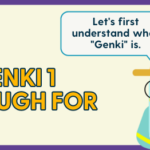The Difference Between “ほど” and “くらい/ぐらい”
“Should I use ‘ほど’ or ‘くらい/ぐらい’? Aren’t they all the same in meaning?” “What’s the difference between ‘この本は300ページほどある’ and ‘この本は300ページくらいある’?” “In business situations, which is correct: ‘値段は1万円ほどです’ or ‘値段は1万円ぐらいです’?”
“ほど” and “くらい/ぐらい” are both expressions indicating degree or extent, and they can be confusing, especially in the early stages of learning Japanese. While these two words seem similar, there are subtle nuances between them. In this article, Eri, a staff member at JPLT Online Japanese Language School, explains the differences between the two, using specific examples to make it easy to understand.
By using “ほど” and “くらい/ぐらい” correctly, you can make your Japanese expressions more natural. Be sure to read this article and master the differences between these two words!
The Difference Between “ほど” and “くらい/ぐらい”
Both “ほど” and “くらい/ぐらい” are used to mean “to some extent” or “about,” but their nuances differ slightly:
- ほど:
- Gives the impression of a clearer degree.
- Often used for comparison. For example, “AはBほど〜ない” is used when comparing the degree of A and B.
- A polite expression, often used in written language or business settings.
- くらい/ぐらい:
- Expresses a rough estimate or degree.
- Commonly used in spoken language, giving a casual, approachable feel.
- Can also indicate a range. For example, “1時間くらいかかる” is used to indicate an approximate length of time.
Let’s Compare Using Examples!
Word | Example | Nuance |
|---|---|---|
ほど | この本は1時間ほどで読める。 | Indicates a specific time of about 1 hour |
くらい | この本は1時間くらいで読める。 | Roughly around 1 hour, give or take |
ほど | 彼は私ほど背が高くない。 | Comparing height between the speaker and another |
くらい | 彼は私くらい背が高い。 | Height is roughly the same between the two |
A Deeper Look
- “ほど” Has a Narrow Range: “ほど” gives a sense of limitation to a particular range.
- “くらい/ぐらい” Has a Broad Range: “くらい/ぐらい” conveys a broader or more approximate sense of range.
- “くらい” is a Shortened Form of “ぐらい”: “くらい” and “ぐらい” are almost the same, though “くらい” is slightly more casual.
Summary
The Difference Between “ほど” and “くらい/ぐらい”
While both “ほど” and “くらい/ぐらい” express degree, their nuances are different:
- ほど: Indicates a clearer degree, used for comparisons, polite expression.
- くらい/ぐらい: Indicates a rough degree, commonly used in spoken language, indicates a range.
Understanding these differences will help you speak more naturally in Japanese. If you want to make your Japanese learning more enjoyable and efficient, we highly recommend JPLT Online Japanese School. At JPLT, learners from all over the world can take one-on-one or group lessons with native teachers. With a variety of courses, including preparation for the Japanese Language Proficiency Test (JLPT) and daily conversation practice, you can tailor your learning to your level and goals.
At JPLT Online Japanese School, even the most difficult Japanese becomes as easy to master as “くらい.” Check out JPLT Online Japanese School for more details: https://jplt-dialogplus.com/
Ready to start your Japanese learning journey with JPLT?



